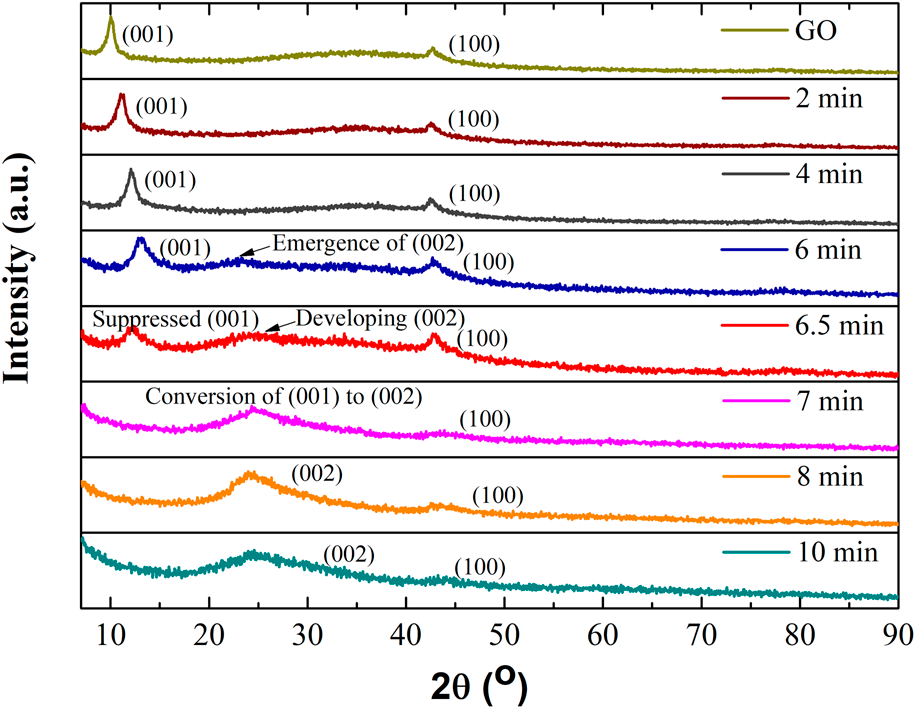Crossref Citations
This article has been cited by the following publications. This list is generated based on data provided by
Crossref.
Torsello, Daniele
Ghigo, Gianluca
Giorcelli, Mauro
Bartoli, Mattia
Rovere, Massimo
and
Tagliaferro, Alberto
2021.
Tuning the microwave electromagnetic properties of biochar-based composites by annealing.
Carbon Trends,
Vol. 4,
Issue. ,
p.
100062.
Bhattacharya, Proma
Sengupta, Iman
Dey, Aishee
Chakraborty, Sudipto
and
Neogi, Sudarsan
2021.
Antibacterial effect of ciprofloxacin loaded reduced graphene oxide nanosheets against Pseudomonas aeruginosa strain.
Colloid and Interface Science Communications,
Vol. 40,
Issue. ,
p.
100344.
Ramamoorthy, Harihara
Buapan, Kanokwan
Chiawchan, Tinna
Thamkrongart, Krongtham
and
Somphonsane, Ratchanok
2021.
Exploration of the temperature-dependent correlations present in the structural, morphological and electrical properties of thermally reduced free-standing graphene oxide papers.
Journal of Materials Science,
Vol. 56,
Issue. 27,
p.
15134.
Sengupta, Iman
Kumar, Suddhapalli SS Sharat
Gupta, Kaveri
and
Chakraborty, Sudipto
2021.
In-vitro release study through novel graphene oxide aided alginate based pH-sensitive drug carrier for gastrointestinal tract.
Materials Today Communications,
Vol. 26,
Issue. ,
p.
101737.
Maddumage, D.C.
Panamaldeniya, S.A.
Kimbulapitiya, K.M.M.D.K.
Jayakantha, D.N.P.R.
Munasinghe, M.A.H.M.
Pemasiri, B.M.K.
Gunawardhana, N.
and
Dassanayake, B.S.
2021.
Effect of annealing temperature on electrical properties of RGO thin films deposited by Atomized Spray Pyrolysis.
Diamond and Related Materials,
Vol. 120,
Issue. ,
p.
108712.
Leong, Ainan
Seeneevassen, Seydiren
Saha, Tridib
Swamy, Varghese
and
Ramakrishnan, N.
2021.
Low hysteresis relative humidity sensing characteristics of graphene oxide–gold nanocomposite coated langasite crystal microbalance.
Surfaces and Interfaces,
Vol. 23,
Issue. ,
p.
100964.
Singh, Pankaj Kumar
Sharma, Kamal
and
Singh, Pradeep Kumar
2022.
Electro-magneto-chemical synthesis and characterization of thermally reduced graphene oxide: Influence of magnetic field and cyclic thermal loading on microstructural properties.
Journal of Solid State Chemistry,
Vol. 312,
Issue. ,
p.
123219.
Krumpolec, Richard
Zelenák, František
Kolářová, Tatiana
Moravec, Zdeněk
and
Černák, Mirko
2022.
High conductive rGO sheets fabricated by mild, low-cost and scalable plasma-triggered reduction-exfoliation of 3D aerogel-like graphene oxide.
FlatChem,
Vol. 35,
Issue. ,
p.
100403.
Akbi, Hamdane
Mekki, Ahmed
Rafai, Souleymen
Touidjine, Sabri
Boudina, Nourhane
and
Bekkar Djeloul Sayeh, Zakaria
2022.
Phenomenological description of the thermal reduction kinetics in graphene oxide films.
Materials Chemistry and Physics,
Vol. 277,
Issue. ,
p.
125477.
Souza, Ingrid E.P.
Cambraia, Luciana V.
Gomide, Viviane S.
and
Nunes, Eduardo H.M.
2022.
Short review on the use of graphene as a biomaterial –prospects, and challenges in Brazil.
Journal of Materials Research and Technology,
Vol. 19,
Issue. ,
p.
2410.
Angizi, Shayan
Huang, Xianxuan
Hong, Lea
Akbar, Md Ali
Selvaganapathy, P. Ravi
and
Kruse, Peter
2022.
Defect Density-Dependent pH Response of Graphene Derivatives: Towards the Development of pH-Sensitive Graphene Oxide Devices.
Nanomaterials,
Vol. 12,
Issue. 11,
p.
1801.
Anusuya, T.
Prema, D.
and
Kumar, Vivek
2022.
Reduction-controlled electrical conductivity of large area graphene oxide channel.
Journal of Materials Science: Materials in Electronics,
Vol. 33,
Issue. 11,
p.
8935.
Jovanović, Zoran
Gloginjić, Marko
Mravik, Željko
Olejniczak, Andrzej
Bajuk-Bogdanović, Danica
Jovanović, Sonja
Pašti, Igor
and
Skuratov, Vladimir
2022.
Mechanistic insights into ion-beam induced reduction of graphene oxide: An experimental and theoretical study.
Radiation Physics and Chemistry,
Vol. 199,
Issue. ,
p.
110355.
Mikheev, Ivan V.
Byvsheva, Sofiya M.
Sozarukova, Madina M.
Kottsov, Sergey Yu.
Proskurnina, Elena V.
and
Proskurnin, Mikhail A.
2022.
High-Throughput Preparation of Uncontaminated Graphene-Oxide Aqueous Dispersions with Antioxidant Properties by Semi-Automated Diffusion Dialysis.
Nanomaterials,
Vol. 12,
Issue. 23,
p.
4159.
Sengupta, Iman
Kumar, Suddhapalli S. S. Sharat
Pal, Surjya K.
and
Chakraborty, Sudipto
2022.
Investigating the effect of graphite pretreatment and contribution of the oxidizer in the synthesis of graphite oxide by hummers approach.
Fullerenes, Nanotubes and Carbon Nanostructures,
Vol. 30,
Issue. 6,
p.
626.
Monga, Divya
and
Basu, Soumen
2022.
Combination of MoS2 nanopetals with Ag nanoparticles decorated graphene oxide for boosting photocatalytic abatement of recalcitrant pollutants under visible light irradiation.
Advanced Powder Technology,
Vol. 33,
Issue. 5,
p.
103555.
Akbi, Hamdane
Rafai, Souleymen
Mekki, Ahmed
Touidjine, Sabri
and
Belkadi, Kamelia
2023.
Kinetic investigation of the multi-step thermal decomposition of graphene oxide paper.
Journal of Thermal Analysis and Calorimetry,
Vol. 148,
Issue. 9,
p.
3487.
Han, Dong
Liu, Yang
Lv, Yang
Xiong, Wei
Hao, Fang
Luo, Hean
and
Liu, Pingle
2023.
In situ oxygen-induced zigzag graphene as metal-free catalyst for hydrogen activation in nitroarenes hydrogenation.
Carbon,
Vol. 203,
Issue. ,
p.
347.
Viprya, Prateek
Kumar, Dhruva
and
Kowshik, Suhas
2023.
Study of Different Properties of Graphene Oxide (GO) and Reduced Graphene Oxide (rGO).
p.
84.
Dehingia, Biswajit
and
Kalita, Hemen
2023.
Facile, cost-effective and mechanically stable graphene-melamine sponge for efficient oil/water separation with enhanced recyclability.
Process Safety and Environmental Protection,
Vol. 170,
Issue. ,
p.
1010.



